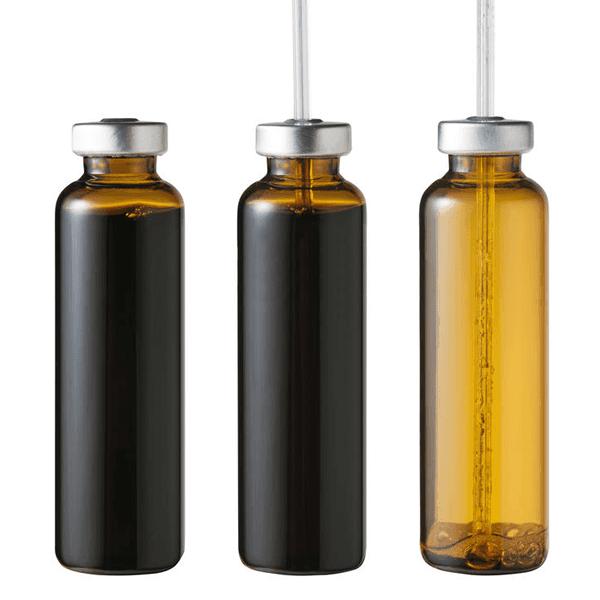Source: Link Testing Instruments Co.,ltd.

GB/T 4546-2008, "Glass Containers - Test Method for Resistance to Internal Pressure," is the core standard for evaluating the internal pressure burst performance of glass containers, such as pharmaceutical bottles, in my country's pharmaceutical packaging sector. Its technical content is equivalent to the international standard ISO 7458:2004, providing the industry with a scientific and unified testing basis. The following provides an in-depth explanation of the standard's core purpose, test methods, equipment requirements, and key parameters:
I.Purpose and Scope of Application
Core Purpose: To determine the ability of glass containers (such as cough syrup bottles) to withstand internal pressure, i.e., their burst strength.
This test is crucial for ensuring the safety of pharmaceuticals during storage and transportation, particularly for syrup bottles, which may generate trace gases due to fermentation or temperature fluctuations, or be subjected to thermal stress during filling and sterilization.
Scope of Application: This standard applies to all types of glass containers, including pharmaceutical bottles. For cough syrup bottles, the test focuses on verifying the structural strength of the bottle body and base to ensure they will not burst under normal or foreseeable abnormal conditions.
II.Test Method
Sample Handling: Before testing, samples must be kept clean to avoid mechanical damage or thermal shock. The test medium is typically tap water, and its temperature must be kept within ±5°C of room temperature to prevent thermal stress from affecting the test results.
Equipment Requirements:
Pressure Control System: Must have a linear pressurization function with a precisely adjustable rate (e.g., 0.4-0.58 MPa/s) and be equipped with a high-precision pressure sensor (accuracy ±0.5% FS).
Sealing Device: An elastic sealing ring must be used to ensure leak-free contact between the bottle neck and the pressure head. The container must be suspended during testing to avoid external interference.
Safety Protection: A protective barrier must be installed in the test area to prevent the splashing of explosive fragments. It is recommended to install a pressure relief device with a set pressure not exceeding 1.1 times the test pressure.
Procedure:
Increase the pressure at a rate of 0.58 MPa/s ± 0.1 MPa/s to a preset value (e.g., 1.2 MPa) and maintain this pressure for 60 seconds.
Observe the container for rupture or cracking. If not, the container is considered acceptable.
Application: Used for rapid screening in mass production to verify whether the container meets the minimum pressure resistance requirements.
Procedure:
Continuously increase the pressure at a rate of 0.58 MPa/s ± 0.1 MPa/s until the container ruptures. Record the maximum pressure at the moment of rupture (burst pressure).
Application: Used for new product development or quality improvement to assess the ultimate pressure resistance of a container.
III. Key Parameters and Precautions
Environmental Control
The test must be conducted at room temperature (20 ± 5°C) to avoid the effects of temperature fluctuations on the mechanical properties of the glass. For example, for every 10°C increase in temperature, the elastic modulus of glass decreases by approximately 1%, which may lead to deviations in test results.
Data Recording and Analysis
The pressure-time curve, fracture pressure, and fracture location must be recorded for each test. For batch testing, statistical methods are recommended for analyzing data distribution, such as calculating the mean, standard deviation, and the pressure corresponding to a 50% fracture rate.
Safety Regulations
Operators must wear protective equipment such as goggles and cut-resistant gloves.
The equipment must be calibrated regularly to ensure the accuracy and repeatability of the pressure control system. For example, the 2025 edition of the Chinese Pharmacopoeia requires a repeatability error of no more than ±2% for the pressurization rate.
IV. Recommended Test Equipment
The LTGPT-02 glass bottle internal pressure tester developed by Link Testing perfectly meets the requirements of the GB/T 4546-2008 standard. This equipment utilizes a servo motor-driven hydraulic system with a pressure increase rate of 0.4-0.58 MPa/s ±0.1 MPa/s, meeting standard testing requirements.
The LTGPT-02 Glass Bottle Internal Pressure Tester features an industrial-grade, high-definition color touchscreen that displays the pressure curve and test status in real time. It supports both constant pressure hold and burst test modes. The equipment also features a built-in high-precision pressure sensor with a measurement accuracy of ±0.5% and a resolution of 0.01 MPa, ensuring accurate and reliable test data.
To ensure operational safety, the LTGPT-02 Glass Bottle Internal Pressure Tester is equipped with an explosion-proof protective cover and a debris collection device to effectively prevent the risk of flying fragments in the event of glass breakage. The equipment also supports data storage and printing, facilitating quality traceability and management.
Summary:
By strictly adhering to the GB/T 4546-2008 standard and integrating the LTGPT-02 Glass Bottle Internal Pressure Tester developed by Link Testing Instruments Co.,Ltd. can effectively evaluate the internal pressure resistance of cough syrup bottles, providing a solid guarantee for the safety of pharmaceutical pack
For more details please visit www.linktesting.org